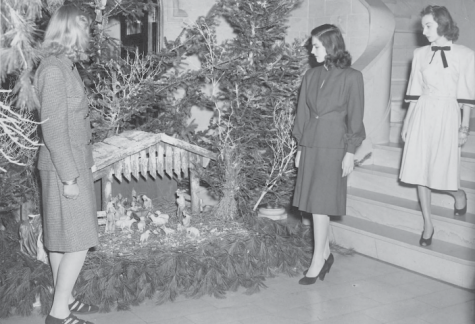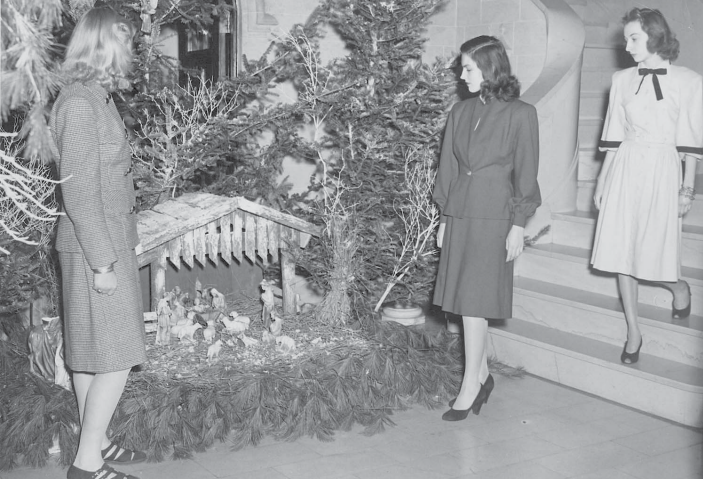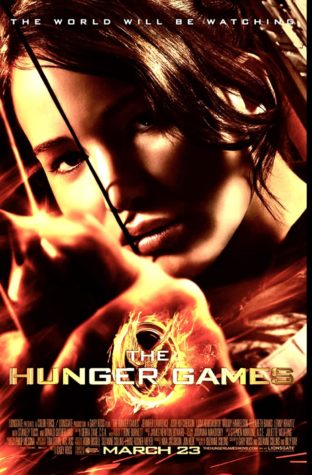Miss Recordia
Three female students, dressed in their best attire, admire a manger scene in the Mercy Hall Foyer in 1949.
December 16, 2017

The Christmas season is a time of giving, and there’s no place like Misericordia to be reminded of that. One of the traditions we hold close to our hearts is the Christmas Dinner. Its originals date to 1934, when the school held a Christmas party in the gym. After the party students were invited to the cafeteria where the Sisters had set up some snacks and hot coca. Christmas celebrations also included an annual Christmas dance. In 1935, alumna put on a dance for the current students. It was held at the Sterling Hotel on December 26, and the entrée fee was $3 with an RVSP. The Christmas Dance at the Sterling Hotel became a loved and cherished tradition over the years.
The dance wasn’t the only thing the school did to get into the holiday spirit. Christmas plays were commonplace. 1935 the school was surprised with two one act plays to bring in the Christmas season – “Why the Chimes Rang” and “The Dust of the Road.”
Misericordia has always been charitable, and in December 1936, the home economics department (yes, we had that) was asking for donations to create holiday baskets to give to the less fortunate. At the time, the secretarial department (that, too) was selling Christmas cards encouraging everyone to buy one as a way to raise money for the department.
While the Christmas holiday is typically about happiness, sadly that’s not always the case. In December 1942, America was in the mist of World War II and everyone was feeling the effects. An article in student newspaper that year contained an article discussing how war would change the way Christmas was perceived. The holiday mood was changing, and one of the best examples of that came in the form of stocking stuffers. One of the most common suffers was women’s stockings, but they were not available because the materials were needed for the war effort. December 1942 was not the only Christmas that felt the impact of World War II. In the December 1944, the newspaper contained little ads telling readers to buy war bonds. These ads were littered throughout the pages of the original “Miss Recordia.” One of the most powerful articles in this issue was about “Tom,” a soldier who would not be home for Christmas. This article truly pulled at the heartstrings. “Yes, Tom will be home for Christmas, but only in his dreams,” was the final line that reminded readers that Christmas was going to be different from the others.
Misericordia shared the Christmas spirit in cutting-edge ways, too. In December 1947, the Catholic Action Club broadcast on WBRE about the naivety scene. Another exciting event happened in 1955 with a scholarship grant from the Ford Foundation, in the amount of $126,100. The cash payment was used to raise employees’ salaries over the following decade. Officials were free to use funds that remained after 10 years in any way the chose.
The Christmas holiday isn’t about receiving and giving gifts, it’s much more, and this school has always reminded us. Happy holidays from our Highlander family to yours!







